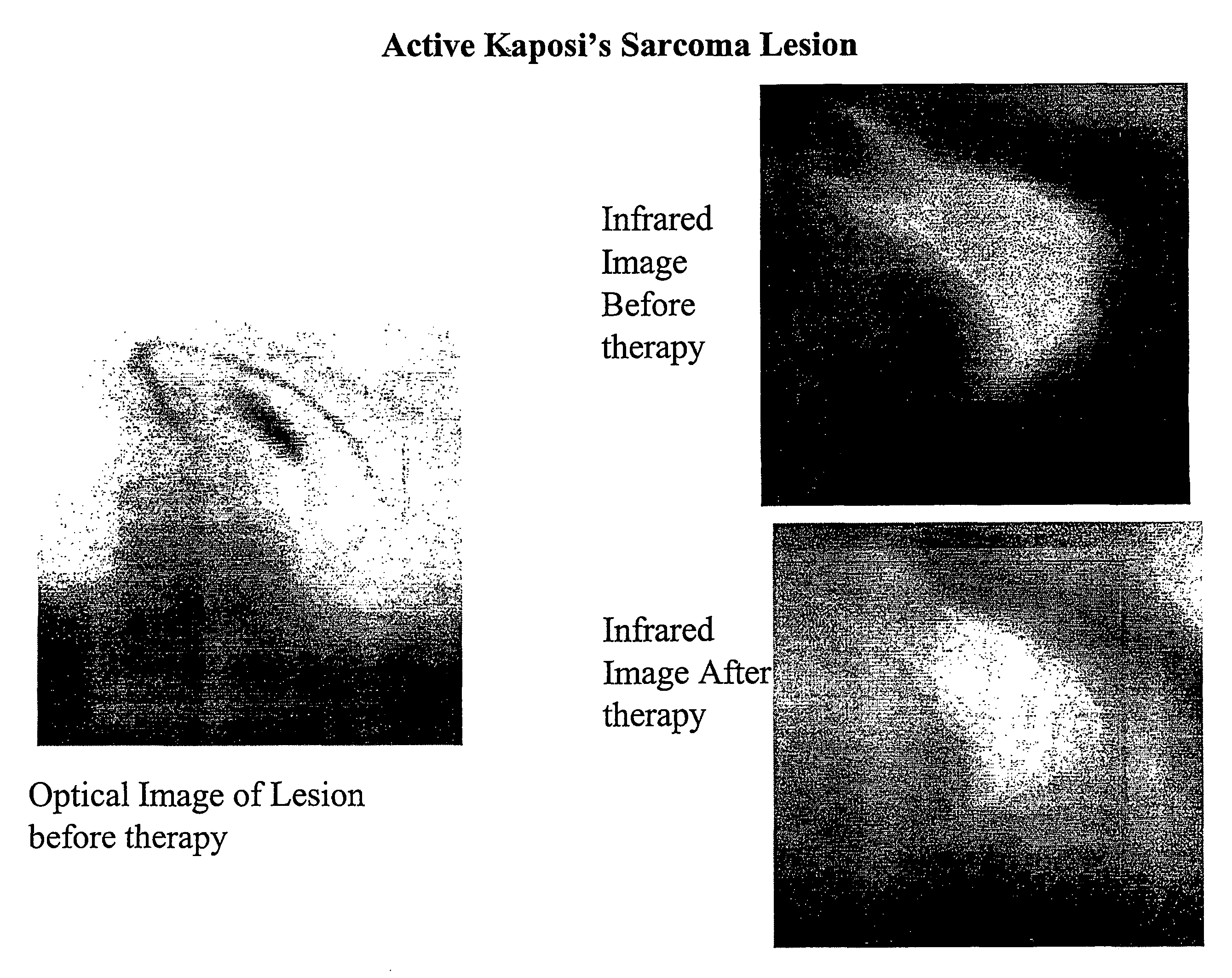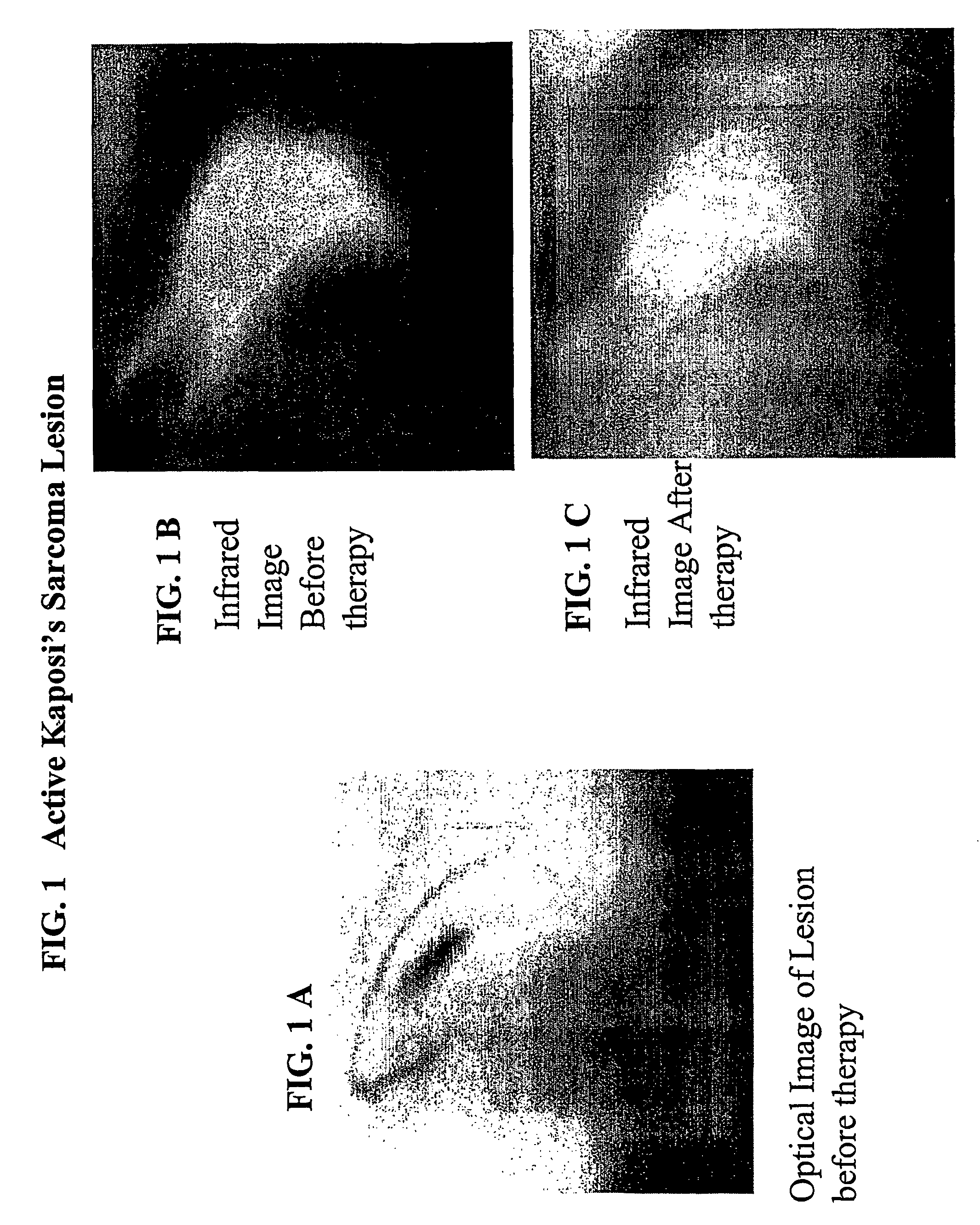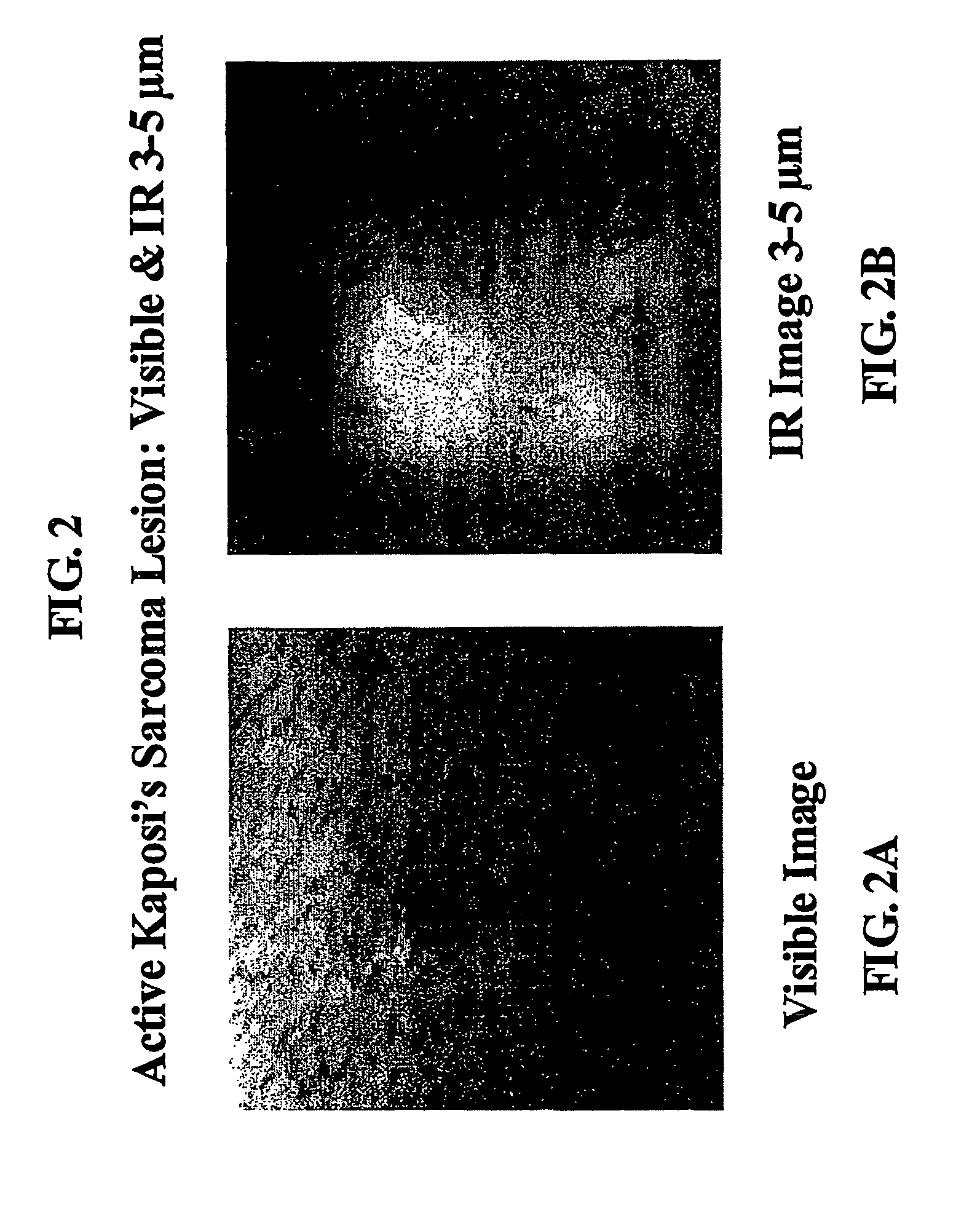Method for imaging and spectroscopy of tumors and determination of the efficacy of anti-tumor drug therapies
a tumor and imaging method technology, applied in the field of tumor imaging and spectroscopy and determination of the efficacy of tumor drug therapy, can solve the problem of no single imaging method capable of quantitatively analyzing tumor angiogenesis
- Summary
- Abstract
- Description
- Claims
- Application Information
AI Technical Summary
Benefits of technology
Problems solved by technology
Method used
Image
Examples
Embodiment Construction
[0019]The present invention is directed to a method of determining regions of vascularity and higher than average metabolic activity of a tissue, tumor or lesion using infrared (“IR”) radiometric thermal imaging. Information on the extent of vascularization and the amount of metabolic activity obtained from IR images taken before and at one or more times after the onset of drug therapy, can be used to assess the efficacy of anticancer or angiogenic disease treatments with drugs or radiation. Because tumor angiogenesis is vital to tumor survival and growth, information on changes in tumor vascularization is useful to monitor efficacy of any treatment, including treatment with antiangiogenesis factors or other regimen that directly or indirectly affects tumor growth.
[0020]The invention is described in part with reference to specific embodiments thereof. It will, however, be evident that various modifications and changes may be made to the inventions without departing from the broader ...
PUM
 Login to View More
Login to View More Abstract
Description
Claims
Application Information
 Login to View More
Login to View More - R&D
- Intellectual Property
- Life Sciences
- Materials
- Tech Scout
- Unparalleled Data Quality
- Higher Quality Content
- 60% Fewer Hallucinations
Browse by: Latest US Patents, China's latest patents, Technical Efficacy Thesaurus, Application Domain, Technology Topic, Popular Technical Reports.
© 2025 PatSnap. All rights reserved.Legal|Privacy policy|Modern Slavery Act Transparency Statement|Sitemap|About US| Contact US: help@patsnap.com



